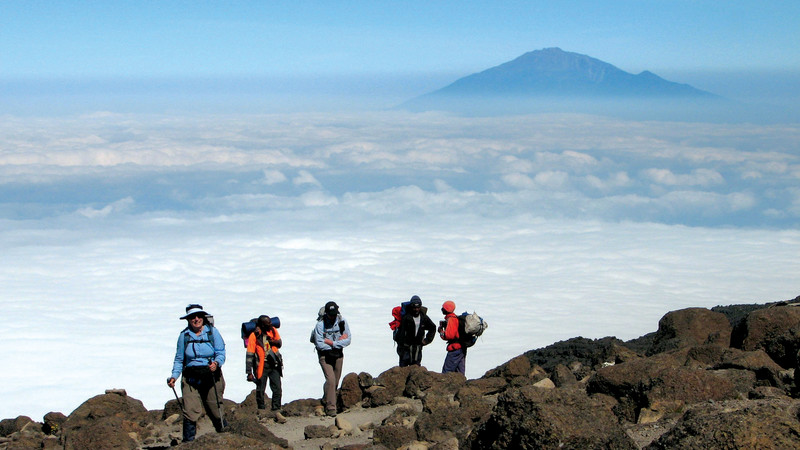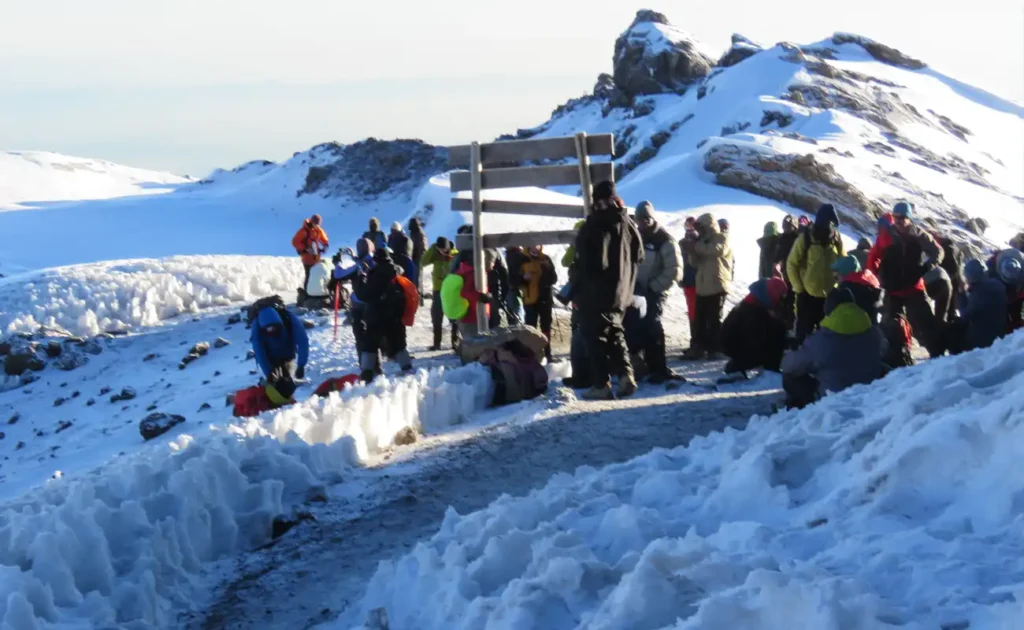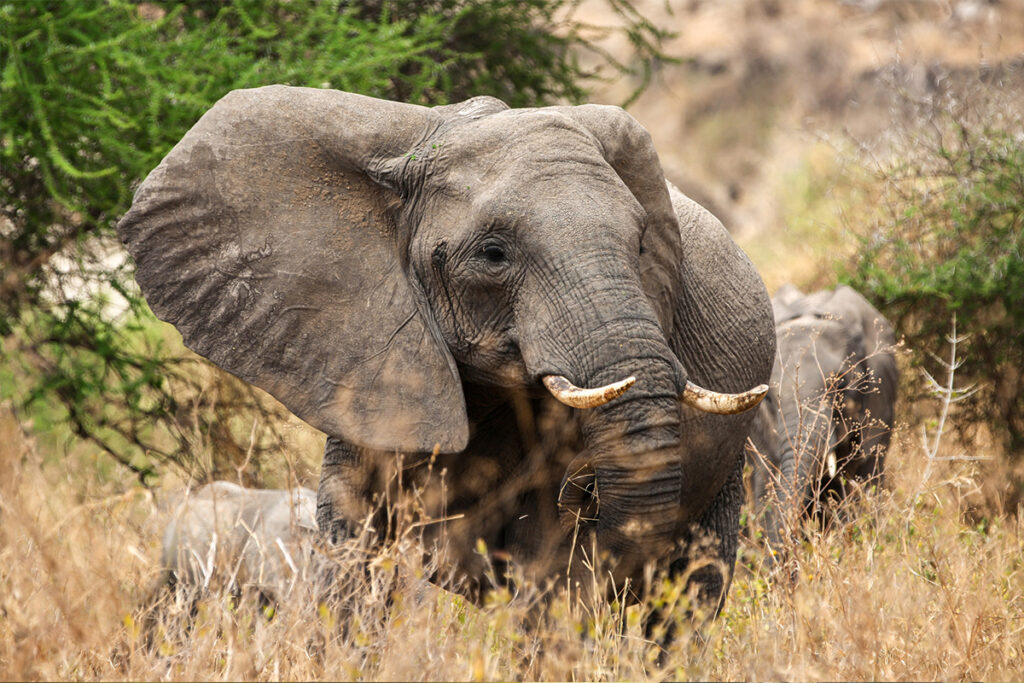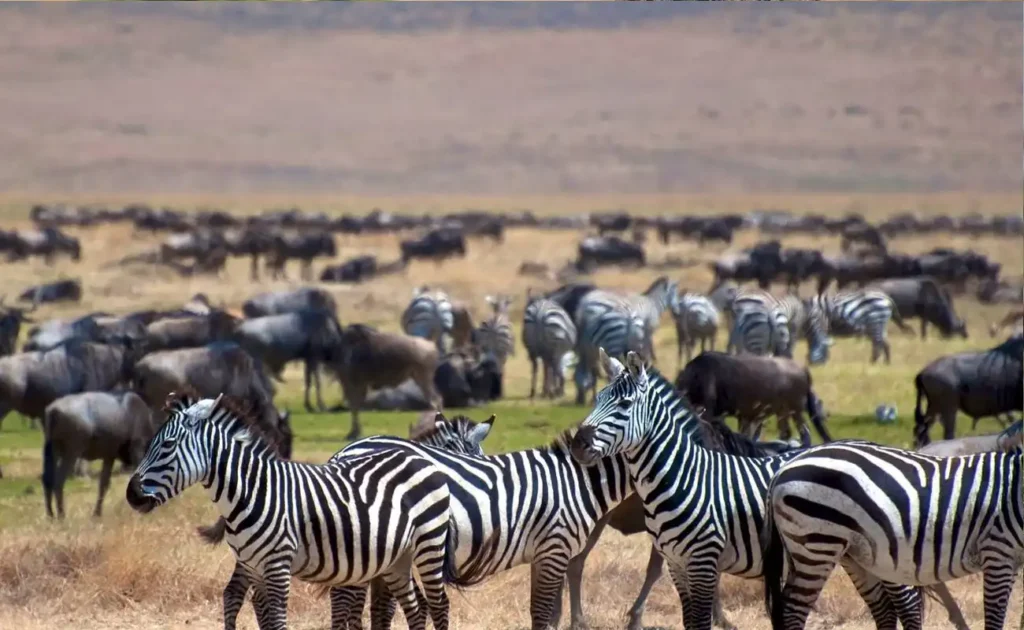Ever wondered why over 50,000 enthusiastic adventurers set foot on Mount Kilimanjaro each year? Renowned for being the world’s tallest standalone mountain, Kilimanjaro promises a transformative experience like no other. The stark contrast of landscapes—from lush rainforests to icy peaks—tests even the most seasoned trekkers, offering diverse challenges and unparalleled rewards.
The allure of Kilimanjaro extends beyond its breathtaking vistas. Historically, this majestic peak has served as both a natural wonder and a cultural icon, with its first recorded ascent in 1889 now legendary. Astonishingly, about only 65% of climbers reach the summit, reminding trekkers that their journey is as much about resilience as it is about reaching Uhuru Peak. This challenge has turned Kilimanjaro trekking into a rite of passage, a journey marked by personal triumph and unforgettable memories.

Kilimanjaro Trekking: A Journey to Remember
Trekking Kilimanjaro is a dream for many adventurous travelers. It’s not just the height that appeals to climbers; the surrounding beauty is equally captivating. As you climb, you pass through different types of environments. These range from dense forests to high-altitude alpine deserts. Reaching the summit feels like stepping into another world, with unforgettable views stretching far and wide.
Choosing the right route is an important part of the climb. Each route offers its own challenges, with varying lengths and degrees of difficulty. Some popular routes are Machame, Lemosho, and Marangu. Climbers should prepare carefully, bringing essentials like warm clothing, hiking boots, and plenty of water. This preparation ensures a safer and more enjoyable trek.
The best time to trek Kilimanjaro is during the dry seasons. These months are from January to March and from June to October. Weather during these times is more predictable, making it easier for climbers. However, due to its popularity, the mountain can be crowded. Booking early and planning ahead are wise moves to avoid disappointment.
Besides the physical challenge, the journey offers rich cultural experiences. Trekkers often meet locals and learn about the region’s culture and traditions. Guides, who are often from local communities, add a personal touch to the journey. They share stories, ensuring trekkers gain a deeper understanding of the land. This cultural exchange can be as rewarding as reaching the summit itself.
Journey to Remember
The Different Routes to the Summit
Mount Kilimanjaro offers several routes to reach its peak, each with unique features. One of the most popular is the Machame Route, often called the “Whiskey Route” because of its demanding nature. This path is scenic and takes about seven days, providing climbers with a great balance of beauty and acclimatization. Another route, known as Marangu, is the “Coca-Cola Route,” famous for its huts and relatively gentle path. It appeals to those seeking a less challenging trek.
For those looking for a quieter journey, the Lemosho Route is a great choice. Known for its stunning panoramic views, this route starts on the western side of the mountain. It takes at least eight days, giving climbers better chances to adapt to the altitude. With fewer crowds on the trails, it offers a more peaceful experience. This route also increases the likelihood of reaching the summit.
The Rongai Route approaches Kilimanjaro from the north, near the Kenyan border. It’s the only route that does this, providing a different perspective of the mountain. Rongai is a dry trail, offering clear views of the terrain below. While it’s less scenic than other routes, it’s also less crowded. Climbers often appreciate the rugged solitude this path provides.
Lastly, the Northern Circuit is the newest and longest route on Kilimanjaro. It circles the mountain, allowing climbers ample time to acclimate. This path showcases diverse landscapes, providing near-constant breathtaking views. The extended time on the trail contributes to a higher summit success rate. For trekkers with time and patience, this route ensures a deep connection with the mountain’s serene beauty.
Preparing for Your Trek: What You Need to Know
Embarking on a trek up Kilimanjaro requires thorough preparation. First and foremost, physical fitness is crucial. Regular exercise that focuses on endurance and strength can make your climb more manageable. Consider activities like hiking, running, or cycling. These will help build the stamina needed for the long trek.
Equipping yourself with the right gear is essential for a successful trek. Besides warm clothing, other must-haves include sturdy hiking boots, a backpack, and a reliable sleeping bag. Investing in quality gear ensures you stay comfortable throughout the journey. Bringing layers of clothing allows you to adjust to the changing weather conditions on the mountain. This approach helps in avoiding any unpleasant surprises.
Understanding altitude sickness is vital before starting your climb. As you ascend, the air becomes thinner, which can make it harder to breathe. Symptoms like headaches, nausea, and dizziness can appear. Proper acclimatization is key, so choose routes that allow for gradual ascents. Staying hydrated and well-nourished also helps in combating altitude sickness.
Documenting your journey can make your trek even more memorable. Many climbers carry a journal to write down their experiences. Others take photos to capture the breathtaking views and unique moments. Sharing your story with friends and family once you return can be gratifying. It also allows you to relive the incredible adventure time and again.
The Best Time of Year to Trek Kilimanjaro
Timing your trek up Kilimanjaro is crucial for the best experience. The mountain has two main trekking seasons, January to March, and June to October. These months offer the most stable weather, with clear skies and less rain. Trekkers find it easier to manage the trails during these times. As a result, these periods are the most popular among climbers.
January to March is known for its cooler temperatures and fewer crowds. This is ideal if you prefer a quieter climb without the hustle and bustle of busier months. However, there can be more snow at the summit during this time. This adds an extra layer of challenge, demanding more gear and preparation. The trade-off is the breathtaking snow-capped views.
On the other hand, June to October provides a warmer climate. This season is the driest and, therefore, offers trails that are easier to navigate. The scenic routes during these months are positively enchanting, presenting vibrant flora and fauna. It is the peak season, so expect to encounter more fellow adventurers. Nevertheless, the camaraderie can be a wonderful part of the experience.
For those who enjoy a more solitary journey, considering the shoulder months like April, May, and November might be beneficial. These months are wetter, making trails muddier and less predictable. While the weather might be challenging, the solitude offers an intimate experience with the mountain. Climbing during these times requires more robust gear to stay dry and comfortable. It’s essential to weigh the solitude against the weather conditions.
Ultimately, the best time depends on your preferences for weather and crowd size. Some are drawn to the quieter moments, even if that means facing more difficult weather. Others thrive in the warm, bustling months, loving the energy and shared experiences with other trekkers. Researching thoroughly before deciding on a trekking time ensures your journey aligns with your expectations and interests. Whatever season you choose, prepare and savor each moment on this incredible mountain.
Wildlife and Natural Beauty of Kilimanjaro
As you ascend Mount Kilimanjaro, the variety of landscapes is truly remarkable. From lush rainforests at the base to snowy peaks at the top, each zone offers unique sights. The mountain’s slopes are home to diverse ecosystems. This results in an amazing array of plant and animal life. Such diversity makes Kilimanjaro a paradise for nature lovers.
The rainforest, located at lower altitudes, is teeming with wildlife. It’s not uncommon to spot monkeys swinging through the trees or colorful birds flitting through the branches. The forest floor is often filled with vibrant flowers. Some climbers also encounter larger mammals, like elephants or antelope, roaming in the brush. This lively ecosystem brings the mountain to life.
As trekkers move higher, vegetation changes to heather moorlands. Here, plants like giant groundsels and lobelias dominate the landscape. These plants have adapted to the cooler climate, creating an alien-like atmosphere. Unlike the bustling rainforest, the moorlands offer a quieter, more serene experience. The silence here can be both eerie and calming.
Above the moorlands, the alpine desert presents a stark contrast. Few plants can survive these cold, arid conditions. Instead, the landscape is dotted with rocks and hardy lichens. This zone challenges trekkers, as oxygen levels drop and temperatures fluctuate. Yet, the raw beauty of the rugged terrain is captivating and unforgettable.
Finally, reaching the summit rewards trekkers with stunning, snowy vistas. This glacier-capped peak gleams under the sun and offers panoramic views of the African landscape below. It’s a thrilling reminder of nature’s power and wonder. Capturing these sights in memory or on camera can be one of the most rewarding aspects of the journey. Each step along Kilimanjaro’s trails reveals more of the wild and wonderful world that awaits.
Preserving Kilimanjaro: Conservation Efforts
Conservation efforts are crucial to preserving the beauty and biodiversity of Mount Kilimanjaro. With thousands of climbers visiting each year, the potential for environmental damage is significant. Efforts to maintain the mountain involve both local communities and international organizations. They work together to implement sustainable practices. These practices aim to reduce human impact and protect the natural environment.
One of the main initiatives is waste management. Trekkers are encouraged to follow the “leave no trace” principle. This means carrying out all trash and minimizing any human impact. There are also clean-up campaigns held frequently. These efforts ensure litter doesn’t spoil the pristine landscape.
Reforestation is another key part of conservation on Kilimanjaro. The lower slopes, which once had dense forests, have faced deforestation due to logging and farming. Planting new trees helps restore these vital ecosystems. Local communities often participate in these projects, which strengthens their connection to conservation. Reforestation efforts also improve the area’s ability to absorb carbon dioxide.
Reducing the carbon footprint of trekking activities is a growing focus. Eco-friendly practices, such as using solar power in campsites, are being promoted. Tour operators are encouraged to adopt greener practices. This can include things like reducing plastic use or offering more sustainable food options. By making these changes, the impact on the environment can be minimized.
Education and awareness programs play a crucial role as well. Informing visitors about the importance of conserving Kilimanjaro helps them appreciate the need to protect it. Guides and porters often share conservation tips with trekkers. This knowledge empowers everyone involved to contribute to preserving the mountain. Spreading this message ensures that future generations can enjoy the same magical experience.
Key Takeaways
- Kilimanjaro offers diverse landscapes from forests to icy peaks.
- The trek is both physically and mentally challenging.
- Reaching the summit provides unmatched, breathtaking views.
- Unique flora and fauna enhance the trekking experience.
- The journey creates unforgettable memories for expert trekkers.




